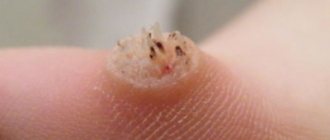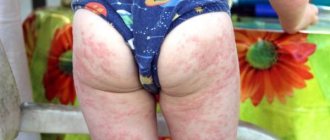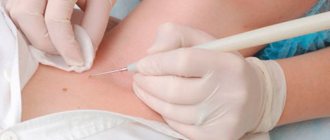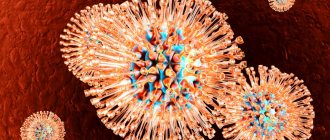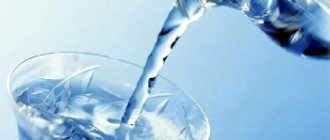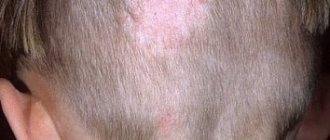The appearance of various calluses in the area of the feet and hands is quite common. But in order to quickly and successfully treat the formation, it must be correctly diagnosed. There can be many reasons, from physical exposure to a virus in the body.
One of the extremely painful formations that occurs in humans is chicken jowl. This callus immediately causes severe discomfort at the site of its appearance, which develops into pain. In addition, the lack of proper treatment can lead to serious consequences.
What is it, what is it called correctly?
Chicken jowl is a painful formation on the arms or legs .
A wart can be round or oval in shape. At the beginning of the development of the disease, it is flesh-colored, but over time it acquires a yellow tint. Initially, the surface of the formation is smooth, but over time it becomes noticeably rough. The diameter of the wart can reach 2 cm, and it rises above the skin by about 2–3 mm. A wart differs from other types: in addition to noticeable roughness, black dots appear on its surface.
The disease does not appear just like that. If chicken jellies occur, it means there is human papillomavirus in the body . Many people encounter HPV; most often this virus does not manifest itself in any way, but in some cases it leads to the appearance of painful nodules.
The top layer of the callus consists of dead cells, and its root goes deep into the layers of the dermis. This is one of the reasons for the difficult removal of formations. If you get rid of the top layer without affecting the root deep in the skin, then in almost every such case a relapse occurs.
If such formations are detected, it is imperative to consult a specialist. Chicken jellies are benign formations, but can be dangerous if injured. Damage to a wart poses a risk of developing a malignant neoplasm.
In addition, in the presence of favorable factors for the development of the disease and the absence of adequate treatment, the formations increase in number and size.
Possible complications
Chicken jowl is not considered a dangerous disease, but it can cause severe physical pain. In the case of injured skin or ulcerative defects, there is a risk of secondary infection, which aggravates the pathological process and provokes the degeneration of a benign formation.
Given this possibility, the patient should seek medical help as early as possible to prevent extensive tissue damage. Callus at an early stage can be treated quickly and successfully, eliminating recurrence of formations. Deep growth into the dermis and a strong increase in size require surgical intervention, which under unfavorable conditions can lead to foot deformation and infection of the body.
To reduce discomfort when walking, a person begins to spare the sore leg and incorrectly distribute the load on the foot. Intentional changes in gait are fraught with the development of lameness, which may remain even after surgical removal of the callus.
What does it look like in the photo?
Below are photos of the disease.
Places of formation - feet, heels, palms, toes and hands
Chicken calluses are classified as palmoplantar calluses . They appear on the surface of the feet or palms. Most often, warts form in the area of the bends of the fingers or on the heels.
When calluses appear on the feet, the pain upon impact is felt much stronger. When the disease has already developed, with every step it may seem as if a thorn or splinter is penetrating the site of formation. This is where the name “horny wart” or “thorn” came from.
Due to the unaesthetic appearance of growths on the skin, the callus is usually called “chicken butt” or “chicken jowl”. This type of formation is unlike other warts. When such formations appear on their hands, people try to get rid of them by any means, but doing this on their own, without a doctor’s prescription, is dangerous and can have serious consequences.
Characteristics of chicken wart
The content of the article
The neoplasm, popularly called a chicken wart, is also called a spine. When such a wart appears, it is smooth, but as it grows it becomes rough. In the center of the neoplasm there is a small papilla, from which a vertical stalk grows.
Most often, several of these legs grow, which is why, upon careful examination, the chicken wart looks like a cauliflower. The color of such warts is usually gray-yellow.
Chicken warts are most often localized on the feet, fingers, palms, and sometimes on the eyelids. Warts located on the feet are often confused with calluses due to the strong keratinization that is characteristic of chicken warts in this area of the body.
When you steam your feet and clean the top layer of the wart, you can see many small dark dots on the surface. This is what clogged capillaries look like.
Reasons for appearance
The direct cause of the appearance of warts on the skin is the human papillomavirus . With strong immunity, the disease does not manifest itself in any way, and the person may not be aware of the presence of the virus. If health weakens or irritable factors arise, then the virus makes itself felt with symptoms. The appearance of warts is just one of the ways HPV manifests itself.
Chicken jellies are formed due to:
- severe decrease in the body's immune function;
- individual intolerance to the virus;
- microtrauma of the skin;
- increased sweating;
- tight and uncomfortable shoes made of poor quality material;
- hormonal disorders;
- exacerbation or occurrence of vascular diseases.
The HPV virus affects more than half of the population, many of them do not even know it. It is easily transmitted; the virus can enter the body:
- through microscopic cracks and wounds on the surface of the skin;
- with kisses, handshakes and other tactile contacts;
- through the use of household items;
- in public places and transport.
Mechanical removal
How to treat chicken jowl callus is decided by the attending physician. At the very beginning of its appearance, therapy comes down to the use of medications. At later stages, they resort to mechanical removal of the growth. Today, there are several methods used to remove chicken gills or other skin tumors:
- An effective method is cryodestruction, which involves freezing the formation using liquid nitrogen cooled to a temperature of -190 degrees. True, this method is used to eliminate non-old formations. Both the wart itself and the HPV are frozen. Some time later, dropsy appears on the affected area. To quickly cure it, regular treatment with salicylic alcohol is necessary.
- The method of electrocoagulation involves burning the body of the callus of chicken gall with a high-frequency current, which coagulates the vessels and blocks bleeding. This effect is also shallow, therefore it is not used to remove old growths.
- Excellent results can be obtained using the laser destruction method. The laser kills the body of the formation and its root. The specialist selects the depth of the required impact independently. In this case, coagulation of the blood vessels occurs, so there is no bleeding, and the virus no longer spreads throughout the body.
- The radio wave destruction method makes it possible to remove formations of various sizes. This method is bloodless, and after it is carried out, the virus stops reproducing. No traces remain at the site of exposure.
- When removing chicken callus surgically, it is excised along with healthy tissue. After exposure, a wound remains, which is sutured. This method is usually used when doctors suspect cancer. In other cases, preference is given to modern methods.
All of the above methods have some contraindications. That is why the choice of method is made by the doctor after diagnosis.
Symptoms of the disease
The appearance of warts on the skin caused by papillomavirus has its own characteristics. This is what allows us to distinguish them from other formations:
- Initially, an inconspicuous small hard nodule appears;
- over time it increases in size and becomes rough;
- color changes to yellowish-gray;
- black dots appear on the surface of the wart;
- painful sensations occur when pressed;
- in the absence of treatment, daughter formations appear;
- the general appearance of the wart is extremely unaesthetic; it noticeably rises above the skin.
If you suspect chicken jelly, you should consult a dermatologist. Accurate diagnosis will allow you to find out the diagnosis and begin treatment in a timely manner.
Main manifestations
The development of a neoplasm occurs in several stages. First, a compaction appears, outwardly similar to an ordinary corn. Due to constant physical pressure on the affected area, the process of keratinization begins in the adjacent tissues, which leads to an increase in the size of the nodule. The formed callus becomes yellowish in color and looks like a convex plaque with clearly defined boundaries. A small depression is visible in the center and processes with black dots at the ends are visible - damaged capillaries. The roots of the wart penetrate quite deeply into the dermis, so treatment of the pathology takes a long time.
The development of chicken gallstones may be accompanied by peeling of the skin, burning sensations and pain.
If left untreated, callus plaques can spread over the entire surface of the foot.
Diagnostics
After contacting a specialist in skin diseases, a study of biological material is carried out - dermoscopy .
To do this, the top layer of dead cells is removed from the surface of the formation. The material is examined under a microscope and using various reagents. The specialist always pays attention to the presence of capillaries in the wart. This criterion allows you to distinguish chicken jowl from an ordinary callus. If the fact of a wart is confirmed, then tests and examinations are prescribed to identify the virus in the body. The doctor also needs to find out the degree of deepening of the root into the dermis in order to choose the most optimal option for removing the wart. For this purpose, an ultrasound examination is performed.
It is recommended to conduct a complete examination of the body . The papillomavirus cannot be treated, but with good immunity it remains dormant and does not bother the carrier in any way. If warts do appear, it means there is a favorable environment for the virus to activate. It is necessary to calculate it and eliminate it in order to avoid a recurrence of the appearance of chicken jellies.
Methods for getting rid of calluses
Chicken zhelka is treated both with the help of hardware techniques and medications. Before prescribing appropriate therapy, the doctor must correctly identify the pathology. The characteristic features of a callus (growths, black spots of clogged capillaries) are visible upon visual inspection. To confirm the diagnosis, dermatoscopy is performed, during which the upper keratinized layer of skin is removed with a special device.
Studying the obtained scales is necessary to confirm the presence of HPV in the body. In case of deep tissue damage, ultrasound analysis is prescribed. To exclude malignancy of the wart, an oncological examination of the epidermal cells is performed.
In most cases, patients seek help at an advanced stage of the disease, when the chicken gall needs to be surgically removed.
Surgical excision
Medical intervention using a scalpel is prescribed when the tumor is significant in size and its roots are deep in the dermis. In this case, along with the affected tissues, healthy tissues are also partially affected.
Traditional Treatments
There are several different options for quickly and completely getting rid of warts, corns and growths. In each individual case, the specialist will advise the most effective method.
Surgical intervention
Surgical excision of a wart is prescribed only if the root of the wart has grown too deeply into the dermis layer and has caused serious consequences, such as foot deformity.
- Before the operation, a thorough examination of the body is carried out.
- The intervention is performed under local anesthesia in a hospital.
- The surgeon, using a scalpel, removes all affected tissue areas.
- Damaged vessels are restored using coagulation or stitched.
- The wound is disinfected and a sterile bandage is applied.
After surgery, regular dressings are required in a hospital setting to avoid infection. Observation lasts several days.
Laser wart removal
This method is the simplest and absolutely safe. Before the procedure, local anesthesia is performed, which completely eliminates discomfort. A special device is used that burns the affected area or evaporates the growth along with the root, it depends on the type of beam.
The advantage of the procedure is that all damaged vessels are immediately sealed, this eliminates the risk of infection, bacteria or bleeding.
The resulting recess must be treated with an antiseptic solution and covered with a sterile bandage. Complete healing occurs within a few days.
Cryodestruction
This method is only suitable for small formations that have appeared recently. The procedure must be performed by a competent specialist.
Liquid nitrogen is used to remove chicken gall . The procedure includes:
- applying the substance to the wart with a special device and pressing for 30 seconds;
- destruction of all keratinized cells under the influence of low temperature;
- the formation of a bubble with liquid at the site of the callus, under which the tissue is gradually restored;
- You cannot puncture the bladder; until it is completely cured, it is treated with healing ointments and an antiseptic.
Electrocoagulation
The procedure is only suitable for the initial stages of wart growth, the root of which is shallow. It is necessary to remove all affected tissue, otherwise a relapse will occur.
Before the procedure, local anesthesia is performed. The upper layers of the skin are treated with a needle electrode, the tissues are heated and burned out. The duration of the operation does not exceed 10 minutes. After the procedure, thin crusts appear on the affected area. If they are rejected on the third day, this indicates successful healing.
How is chicken zhole treated?
The process of healing from an illness requires a serious approach, since there is a high probability of relapse of the disease. After all, HPV remains in the body for life. It happens that a wart self-destructs, but these are isolated and extremely rare cases.
This video will tell you when the chicken jelly appears:
To remove chicken gall, you need to decide on the treatment method. Traditional medicine uses in most cases surgical intervention, which guarantees radical removal of the growth.
After all, a wart is not only painful and unsightly, but also dangerous. Serious injury from chicken callus threatens to develop into a malignant tumor.
When diagnosing a neoplasm that looks like a chicken gall, the doctor must determine the degree of growth into the dermis. This requires dermatoscopy and ultrasound examination.
Confirmation of the presence of human papillomavirus in the body is a basic element of a correct diagnosis. The result of the examination determines the specialization of the doctor who will carry out the treatment.
In case of a malignant course of the disease, a dermato-oncologist will be required.
If the reason for the development of chicken jowl lies in something else, then the treatment process will be supervised by a podologist. So, there are five traditional treatment options:
- electrocoagulation
- cryodestruction
- laser treatment
- radio wave method
- medicinal antiviral drugs.
During an electrocoagulation session, chicken jolx is removed under the influence of high-frequency current. The main indication for this method is shallow growth of the formation.
If the callus has grown deeply, cauterization will be ineffective. The maximum that can be expected from burning out a deeply sprouted wart is the removal of a cosmetic defect for a short period of time.
Then everything returns to its original position. Chicken jelly continues to develop in its former place, but this time in the company of subsidiary formations, which are more difficult to treat.
When carrying out cryodestruction, liquid nitrogen is used. Under its influence, the callus dies off, which leads to its destruction. The main point of the procedure is the level of qualification of the specialist.
With a superficial impact on the formation, there is a high probability of relapse, and in the case of too deep intervention, a scar remains on the surface of the skin.
One of the modern methods of getting rid of chicken gall is laser treatment. Fast and efficient is his motto! Laser beams aimed at formation cause the process of death of its cells.
After the procedure, only a small spot will remain on the skin, which will disappear over time.
The use of the radio wave method is effective in that its use completely eliminates the possibility of the chicken gall virus entering the blood, since the radio knife burns the vessels supplying the formation with vital substances.
Drug treatment
Drug treatment of chicken callus includes the use of antiviral drugs, the production of which is based on salicylic, nitric and lactic acids.
The drug imiquimod is prescribed to stimulate the body's production of cytokines. They are responsible for the destruction of the human papillomavirus, which entails the death of chicken gall cells.
The list of other drugs that have a medicinal effect on a wart is quite long, but the use of Solcoderm, Viferon, Panavir, Kolomak, Duofilm, Feresol, Salipod, Cryopharma, and also salicylic acid is really effective.
All these funds are absolutely accessible in terms of pricing policy for all categories of the population.
Using traditional methods for treating chicken callus
This approach will be effective only if the disease is in its initial stage. Traditional methods of treating calluses may not bring positive results. In this case, traditional medicine should be used.
No negative results have been recorded from the use of traditional medicine, so all that can be expected from it is a cure or the confidence that one should immediately seek qualified help.
Treatment with folk remedies
Using a pipette, apply vinegar to the chicken callus area. The method is characterized by quite excruciating pain, so it is recommended to start the procedure in the evening, when all the work has already been done.
Attention! The droplet should be of such a size that it does not extend beyond the affected area.
Soak the onion feathers in vinegar. Apply to the callus overnight, securing with adhesive tape. Repeat the procedure until the chicken meat falls off. Attention! The onion feather soaked in vinegar should be no larger than the size of the formation.
For rapid healing, as well as disinfection of the resulting wound, aloe leaves are used. It is recommended to rub chicken jolka with potatoes, which have been previously peeled. Then wrap it with a bandage and leave it overnight.
One of the most effective remedies is considered to be a combination of peeled potatoes and celandine liquid. To do this, the juice of the medicinal herb is applied to the callus. A day later, the affected area is thoroughly rubbed with peeled potatoes.
Repeat the procedure until the callus falls off. Attention! The yellow liquid from celandine is very toxic and should be applied very carefully. Healthy areas of the skin should not be affected.
How to treat chicken gall, watch this video:
Recipes for medicinal decoctions and compresses
In winter, if you have chicken callus, it is recommended to steam your feet in pre-cooked spruce trees. The temperature of the broth should be extremely hot, that is, such that it is possible to put your feet in it.
In addition to the positive effect in the process of steaming chicken calluses, the medicinal properties of spruce have a positive effect on other diseases of the skin of the feet. For example: foot fungus.
It is often a concomitant disease with plantar callus.
The process of preparing the decoction:
The length of spruce branches should be within 10-15 centimeters. Fill them with cold water in sufficient quantity to lower your legs to the bone of the foot. Cook for about five minutes. Let sit until the appropriate temperature.
Steam until the water becomes cold. Repeat the procedure for two to three months, once every two days.
Before you try to eliminate chicken callus yourself using folk remedies, you should definitely consult with a specialist. After all, as stated earlier, it is quite difficult to determine by eye the degree to which a wart grows deep into the dermis.
Each specialist in this field, after appropriate research, will give recommendations on the effectiveness of using folk remedies to treat each case. And if this really gives a positive result, then there is no need for radical intervention.
Pharmacy products
Using purchased products, you can get rid of a wart only in the initial stages of its appearance. When the root goes deep into the layers of the skin, ointments and patches will not be able to remove all the affected tissue. There are several most popular products for home use:
- Salicylic ointment . The site of the wart must be steamed, then applied with ointment and a bandage for 12 hours. After removal, you need to carefully exfoliate the loose skin. The steps can be repeated to completely remove dead skin.
- "BioAstin antimozolin" . The cream is rubbed into the affected area several times a day until complete recovery.
- Oxolinic ointment . The product is applied three times a day, the last time is best to treat the wart before going to bed, after steaming it.
Chicken jolka patches can help with continuous treatment for two weeks. They are made on the basis of the same acid or salicylic ointment. The product is glued to the affected area of the skin; it is better to secure it on top with a regular band-aid. It needs to be changed every 12 hours.
Description of the disease
The formation of a callus most often indicates the activation of papillomavirus in the human body, which is transmitted through household contact or when visiting public places (swimming pools, saunas). Since more than 60% of the world's population are carriers of HPV, both men and women are susceptible to the disease, regardless of age.
Single growths are localized on the forefoot, heels, but in some cases they may be located on the hands or between the toes.
Pressure on the affected area causes pain, which intensifies when walking, limiting movement. Physical discomfort is often aggravated by a feeling of aesthetic discomfort.
How to treat using traditional methods at home?
Eliminating warts using traditional methods requires patience, since treatment usually takes quite a long time. But it will be effective only if there is little education.
- Celandine . You need to cut the stem of the plant and carefully squeeze out the juice. Before applying to chicken zholka, the skin around it must be lubricated with zinc ointment or fatty cream, this way you will avoid burns to healthy tissues. If you repeat the procedure 3 times a day, the final result will be achieved in 2-3 weeks.
- Propolis . You need to cauterize the wart with an alcohol-based propolis tincture several times a day. The skin around it must be protected from burns using a fat-based ointment or cream.
- Garlic is crushed and used in combination with natural honey in equal proportions. The mixture is infused for 3 days in a cool place, after which it is applied to the chicken gill and secured with a bandage or plaster. The dressing is changed every 12 hours.
- Place vinegar It is better to perform actions before bedtime. The method is not very popular, as it can cause pain.
- Lemon can be used with acetic acid. The peel of one fruit is crushed and poured with 50 ml of 70% vinegar and left for 7 days. Every day the container with the infusion must be shaken. You can use the solution 2-3 times a day, lubricating the wart. Treatment continues until the formation disappears completely.
- Using iodine is the simplest and most affordable way to get rid of chicken jellies. It is necessary to treat the affected area several times a day.
It is worth remembering that simply getting rid of a wart is not enough; treatment must be comprehensive. To strengthen the body, specialists prescribe vitamins and drugs to suppress viral infections.
Preventive measures
To prevent the appearance of chicken butt, it is recommended to lead a healthy lifestyle. Primary prevention includes preventing HPV infection. If the patient is already infected, prevention is aimed at strengthening the immune system and preventing damage to the skin of the legs.
Other preventive measures:
- timely treatment of cracks and scratches on the skin with an antiseptic;
- lubricating the foot with cream;
- wearing quality shoes;
- balanced diet;
- taking vitamin complexes;
- moderate physical activity.
To completely get rid of chicken callus, it is recommended not only to remove it, but also to simultaneously maintain a healthy lifestyle. This comprehensive approach to therapy helps maintain antibodies to HPV at the desired level. Against the background of weakened immunity, viruses multiply and the disease recurs. The prognosis is positive with timely treatment.
Is the disease dangerous, and what could be the consequences?
The human papillomavirus itself does not pose a danger to the body .
In its presence and associated factors, only unpleasant symptoms of papillomavirus may appear. But the warts themselves can be dangerous to humans. The formations are benign, but if they are damaged there is a risk of degeneration into a malignant tumor. To avoid this, it is necessary to promptly consult a specialist to make a diagnosis and receive competent treatment.
Clinical picture
Anserine bursitis causes pain in the inside of the knee joint (most often when running or walking up stairs). Spontaneous pain may also occur in the anteromedial part of the knee when going up or down stairs. There will be swelling around the bursa, and the area itself will be painful on palpation.
Other clinical symptoms may include:
- decreased muscle strength;
- gait disturbances;
- decreased function;
- limitation of range of motion in the joint;
- postural dysfunctions/biomechanical disorders of the lower extremities.
Factors that aggravate symptoms include movements such as knee flexion and internal rotation, as well as external rotation and hip adduction. Spinning, kicking, squatting, and moving quickly from side to side will cause further irritation in the crow's foot area.
Prevention measures
To avoid infection with the human papillomavirus or the appearance of warts even if it is present in the body, you must follow simple rules:
- maintain hygiene (all personal items must belong to one person and be disinfected in a timely manner);
- properly care for the skin of your hands and feet;
- observe the rules of hygiene in public places and after visiting them;
- be regularly examined and support the body with vitamin complexes if necessary;
- choose comfortable and high-quality shoes;
- regulate excessive sweating of the feet using special zinc-based ointments.
Paying attention to your health and proper attitude to hygiene allows you to avoid not only the appearance of warts, but also many other formations and corns.
Effective treatment of calluses
The methods used to treat calluses on the toes are the same as those used to remove them on the hands. But it is worth considering several significant nuances when treating calluses on the feet.
The most important factor is the location of the callus. Long-term treatments can cause great discomfort. For example, if you remove nitrogen, the wound takes a long time to heal and cannot be wounded, which can be difficult to do.
When undergoing surgery, you need to be prepared for long and painful wound healing, which may limit comfortable movement for some time. You cannot burn warts on your fingers; the skin in this area is quite thick and the current may not reach the roots of the wart, making the procedure useless. Consider excessive sweating of the feet and periodic wearing of shoes.
When choosing the most appropriate treatment method, you need to take into account the specifics of the procedure and the duration of healing.
